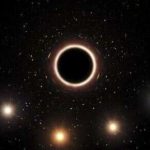Key Takeaways:
- Scientists estimate how many Dyson Spheres could be built in the Milky Way to find alien life.
- Dyson Spheres are giant structures around stars to collect energy.
- The study looked for stars with infrared radiation that might indicate a Dyson Sphere.
- Less than 0.1% of stars studied are likely to have a Dyson Sphere.
- Scientists will look closer at a small percentage of these stars to rule out natural explanations.
When it comes to finding alien life in the universe, it may not be what you can find, but what you can’t. A group of scientists estimated the number of Dyson Spheres—a hypothetical energy source—that could be constructed around Milky Way stars in order to achieve precisely that goal.
A study detailing their work can be found on the preprint server arXiv.
The co-author of a recent paper on the possible number of Dyson Spheres in the galaxy, Penn State graduate student Macy Huston, explains why one should have theoretical expectations when conducting a search for these objects.
Huston tells Inverse, “The idea behind upper limits is that we often do not find what we are searching for.” “But, we can still learn something from that.”
WHAT IS A DYSON SPHERE?
A hypothetical megastructure called a Dyson sphere is designed to surround a star and gather its energy output.
Physicist Freeman Dyson first suggested them in 1960 as a means of addressing the issue of an expanding extraterrestrial society that required a significant energy output to sustain its existence. They would construct space-based stellar energy harvesting swarms around their host star and other nearby stars to harvest their energy and use it to power their existence.
The fact that a planet only receives a small portion of the energy produced by its host star served as the foundation for Dyson’s proposal.
For instance, Earth only receives a small portion of the Sun’s total energy output—roughly one billionth. However, we could meet our energy needs and advance society if we built a structure based in space. But in terms of developing this kind of technology, Earthlings are far behind. Rather, only a highly developed extraterrestrial civilization could accomplish it.
Dyson had also proposed that the search for extraterrestrial intelligence (SETI) programs should “search for sources of infrared radiation” to “accompany the recently initiated search for interstellar radio communications.”
However, in order to look for these theoretical structures, scientists must also be aware of what they can’t find.
The researchers behind the new study examined 260,000 stars in the Milky Way using optical data from the Gaia Observatory, a space telescope launched by the European Space Agency in 2013, and infrared data from the AllWISE program, which offers the most comprehensive view of the full mid-infrared sky.
Once the brightness of these stars was combined, the scientists built models of Dyson Spheres that displayed the potential temperature of the star (estimated to be about 300 Kelvin) as well as the area they would cover (roughly 10–90 percent of the star). They compared that with the luminosity and temperatures of the stars.
This allowed us to calculate how many stars in the sample would fit into the Dyson sphere models, according to Huston. “Then, that is the limit on how common such objects could be.”
Less than one in every 1,000 of the 260,000 stars examined by the team are compatible with a 300 Kelvin Dyson sphere that covers roughly 10% of the star. Less than one per 10,000 stars was the limit for 50% coverage, and less than one per 100,000 stars for 90% coverage.
Huston explains, “This is just an upper limit, not a definitive rate of true Dyson spheres. Any or all of these objects may have natural causes for their infrared excess.”
The goal of the study’s team is to focus on just a few percent of the stars that may be home to Dyson Spheres in order to look for extraterrestrial megastructures in the Milky Way.
“In order to fully understand what’s happening in each of these stars, the group would need to analyze their full spectra,” Huston says. “But, just a closer look at their spectral energy distributions…can help to rule out many types of natural dusty objects, which can initially look a lot like Dyson spheres.”
They are now waiting on the release of data that Gaia collected this summer in order to study the stars in more detail.


